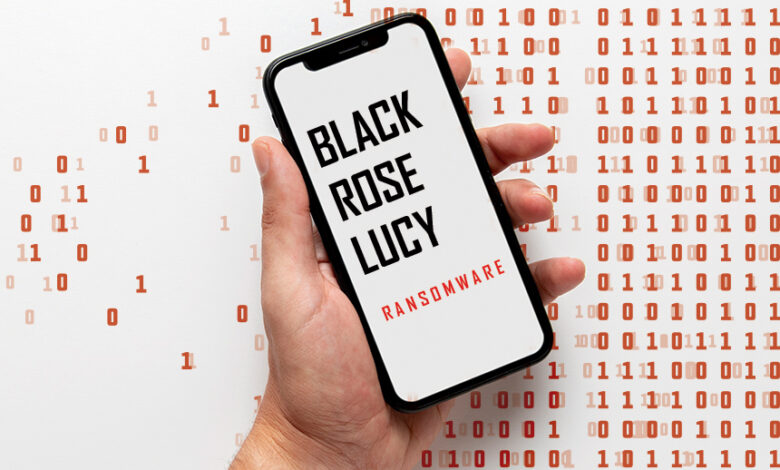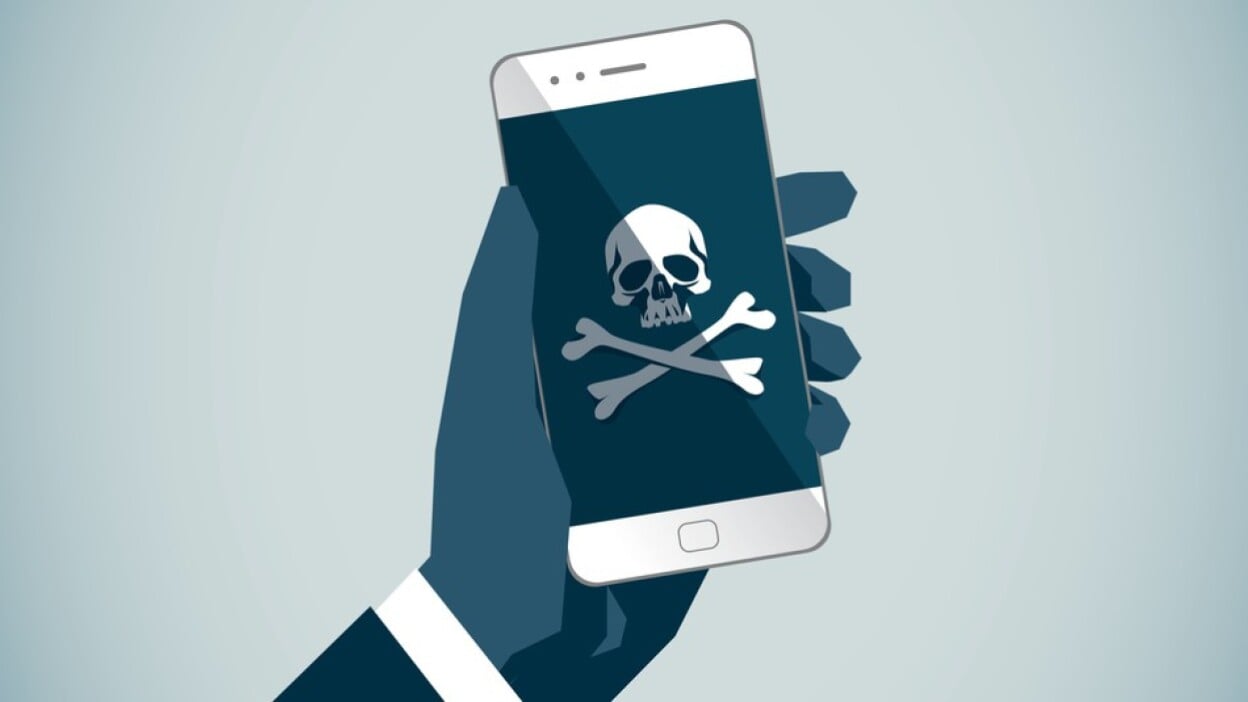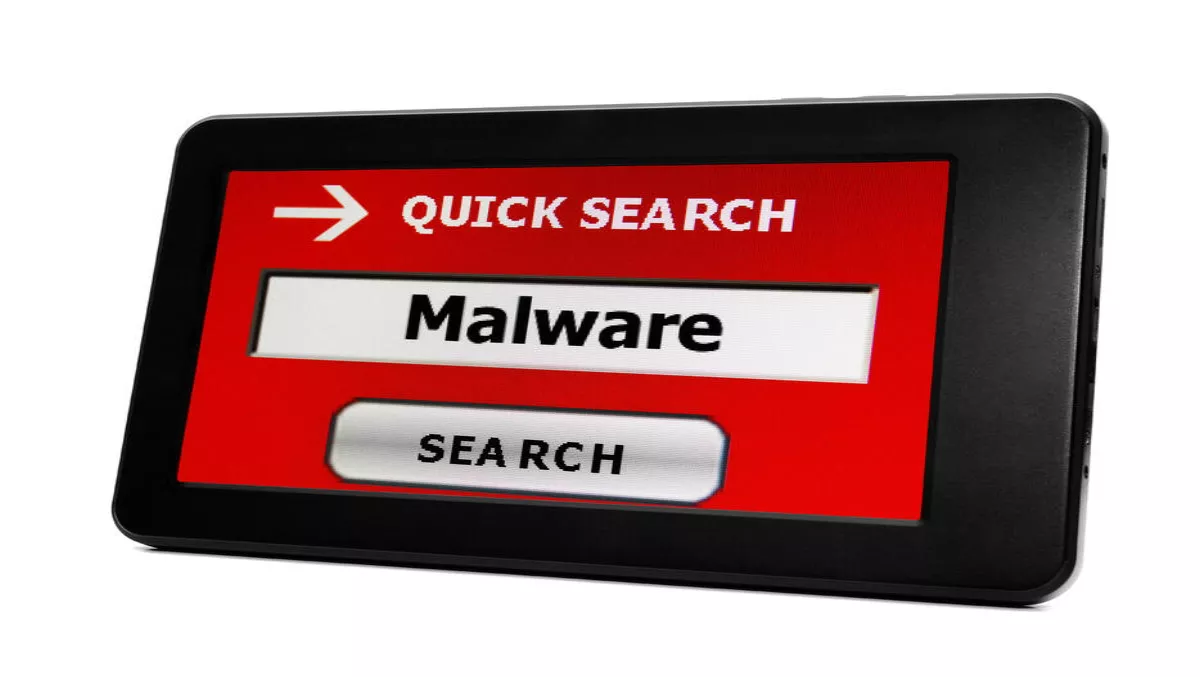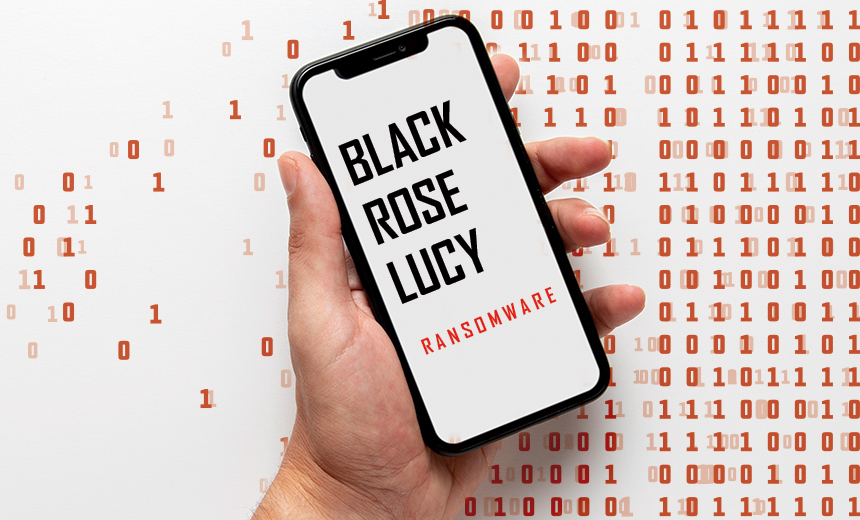
Black Rose Lucy Ransomware Attack on Android Devices
Black Rose Lucy ransomware attack on Android devices is causing serious headaches for users worldwide. This insidious malware is encrypting sensitive data, demanding ransoms, and leaving victims scrambling for solutions. We’ll delve into the technical details of this threat, explore its impact, and arm you with the knowledge you need to stay safe. This isn’t just another tech story; it’s a real-world problem affecting real people, and understanding its intricacies is crucial.
This post will cover everything from the malware’s infection mechanism and encryption techniques to the best prevention strategies and data recovery methods. We’ll also examine the attackers’ motives and look at the broader implications of this type of cybercrime. Get ready to learn how to protect yourself and your data from this dangerous threat.
Black Rose Lucy Ransomware
Black Rose Lucy represents a significant threat to Android users, demonstrating sophisticated techniques and a concerning ability to evade detection. This analysis delves into the technical aspects of this ransomware, providing insights into its operation and the methods employed to compromise devices. Understanding these mechanics is crucial for developing effective preventative measures and mitigation strategies.
Infection Mechanism
Black Rose Lucy primarily spreads through deceptive means, often disguised as legitimate applications downloaded from unofficial app stores or through phishing campaigns. Once downloaded, the malware typically requests extensive permissions, often including access to storage, contacts, and other sensitive data. This allows the ransomware to encrypt files without the user’s immediate knowledge. The malware might also exploit vulnerabilities in older Android versions or poorly secured applications to gain initial access to the device.
Successful installation often involves user interaction, such as granting permissions or clicking on malicious links. This highlights the importance of only downloading apps from trusted sources and regularly updating the Android operating system.
Encryption Techniques
Black Rose Lucy employs a robust encryption algorithm, likely AES (Advanced Encryption Standard) with a strong key length, to encrypt targeted files. The specific algorithm and key management techniques remain under investigation, but the encryption appears to be quite effective, making decryption without the decryption key extremely difficult, if not impossible, using conventional methods. The ransomware likely utilizes a unique key for each victim’s device, further complicating the decryption process.
The Black Rose Lucy ransomware attack targeting Android devices highlights the urgent need for robust mobile security. This kind of threat underscores why solutions like those discussed in this article on bitglass and the rise of cloud security posture management are becoming increasingly critical. Effective cloud security posture management is essential to prevent similar attacks from crippling our devices and data; Black Rose Lucy serves as a stark reminder of that.
This method ensures that decryption tools targeting one victim will not work on others.
Communication with Command-and-Control Servers
The ransomware communicates with its command-and-control (C&C) servers to receive instructions and potentially to register the infected device. This communication likely occurs over a network using encrypted channels to evade detection. The C&C server is responsible for generating the unique encryption key for each victim and delivering the ransom note. The exact communication protocols used by Black Rose Lucy are not publicly known, but it is likely to use standard network protocols obfuscated to avoid detection by security software.
Disrupting these C&C servers is a crucial aspect of mitigating the ransomware threat.
Targeted Data
Black Rose Lucy targets a broad range of data files, including but not limited to documents (.doc, .docx, .pdf, .txt), images (.jpg, .png, .gif), videos (.mp4, .avi, .mov), and audio files (.mp3, .wav). The ransomware also potentially targets database files and other sensitive personal information. The specific file types encrypted might vary depending on the version of the ransomware or specific configurations.
The indiscriminate nature of its targeting underscores the significant potential for data loss and disruption.
Ransom Demands and Payment Methods
Black Rose Lucy typically demands a ransom payment in cryptocurrency, such as Bitcoin or Monero, to obtain the decryption key. The ransom amount varies depending on factors such as the amount of data encrypted and the victim’s perceived ability to pay. The ransomware usually displays a ransom note containing instructions on how to pay the ransom and obtain the decryption key.
Payment is usually facilitated through untraceable cryptocurrency transactions, making it difficult to track the perpetrators.
| Ransomware | Average Ransom Demand (USD) | Payment Methods | Target Platforms |
|---|---|---|---|
| Black Rose Lucy | $500 – $2000 (estimated) | Bitcoin, Monero | Android |
| Cerber | $500 – $1000 | Bitcoin | Windows, Android |
| WannaCry | $300 – $600 | Bitcoin | Windows |
| GlobeImposter | $500 – $1500 | Bitcoin | Windows |
Impact and Victims of the Black Rose Lucy Ransomware Attack

The Black Rose Lucy ransomware attack, while not as widely publicized as some other major ransomware events, still inflicted significant damage on its victims. The financial losses, data breaches, and operational disruptions caused ripple effects across individuals and businesses, highlighting the persistent threat posed by such attacks on the Android ecosystem. Understanding the extent of the impact is crucial for developing effective preventative measures and mitigating future damage.The financial losses resulting from the Black Rose Lucy attack varied greatly depending on the victim’s circumstances.
Smaller businesses, often lacking robust cybersecurity infrastructure, likely suffered the most significant proportional losses, potentially including ransom payments, lost revenue due to downtime, and the costs associated with data recovery and system restoration. Individuals, while facing smaller monetary losses on average, still experienced the significant burden of ransom demands, often coupled with the expense of replacing compromised devices or recovering personal data.
The lack of publicly available, comprehensive data on ransom payments makes precise quantification challenging, but anecdotal evidence suggests a wide range of financial impacts.
Financial Losses Suffered by Victims, Black rose lucy ransomware attack on android devices
Estimating the precise financial impact of the Black Rose Lucy ransomware attack is difficult due to the decentralized nature of the attacks and the reluctance of victims to publicly report their losses. However, we can infer potential financial impacts based on similar ransomware attacks. For example, a small business might lose thousands of dollars due to downtime, data recovery, and potential ransom payments.
Larger companies might face losses in the hundreds of thousands or even millions, depending on the scale of the breach and the sensitivity of the compromised data. Individuals, meanwhile, could lose hundreds of dollars in ransom payments and the cost of replacing devices or recovering their data.
Data Breaches and Privacy Violations
Black Rose Lucy’s impact extended beyond financial losses. The ransomware likely encrypted sensitive personal information, including contact details, financial records, and potentially even health data. This resulted in significant privacy violations, exposing victims to identity theft, financial fraud, and other serious consequences. The potential for long-term damage from such data breaches is substantial, impacting victims’ credit scores, financial security, and overall sense of well-being.
The lack of transparency surrounding the attack makes it difficult to determine the precise extent of the data breaches, but it’s safe to assume a significant number of users experienced a compromise of their private information.
Disruption Caused to Individuals and Businesses
The attack caused significant disruption to both individuals and businesses. Individuals experienced the frustration of inaccessible personal data, the disruption of daily activities reliant on their mobile devices, and the emotional distress associated with a security breach. Businesses faced operational downtime, lost productivity, and potential damage to their reputation. The disruption could range from a minor inconvenience for individuals to a major crisis for businesses, impacting their ability to operate effectively and potentially leading to long-term consequences.
For instance, a small business relying on its Android devices for customer management or financial transactions could face significant setbacks, leading to revenue loss and potential closure.
Geographical Regions Most Affected
Pinpointing the specific geographical regions most affected by Black Rose Lucy is challenging due to the lack of publicly available, comprehensive data on the attack’s victims. However, based on the prevalence of Android devices and internet usage globally, it’s reasonable to assume that the attack affected users across multiple countries and regions. Further investigation and analysis of victim reports (if available) would be necessary to provide a more accurate geographical distribution of the impact.
Android Devices Most Vulnerable to the Attack
The types of Android devices most vulnerable to the Black Rose Lucy attack likely included those running older, unsupported versions of the operating system. Devices lacking regular security updates and those with insufficient anti-malware protection were also likely more susceptible.
- Older Android versions (pre-Android 10 or 11)
- Devices with outdated security patches
- Devices lacking robust anti-malware software
- Rooted or jailbroken devices
- Devices downloaded apps from untrusted sources
Black Rose Lucy’s Code and Functionality

Black Rose Lucy, while not as widely documented as some other ransomware families, presents a concerning threat due to its effectiveness and the relative lack of readily available countermeasures. Analyzing its code reveals a sophisticated, albeit not exceptionally novel, approach to data encryption and persistence. Understanding its inner workings is crucial for developing effective defenses.The ransomware’s code is structured in a modular fashion, typical of modern malware designs.
This modularity makes it easier to update and maintain, allowing the developers to add new features or adapt to evolving security measures. Key modules handle encryption, file system traversal, network communication, and persistence mechanisms. Each module is designed to perform a specific task, promoting code reusability and reducing redundancy. This also makes reverse engineering more complex, as the analyst needs to understand the interactions between these individual components.
Obfuscation and Anti-Analysis Techniques
Black Rose Lucy employs several techniques to hinder analysis. String encryption, a common practice, prevents immediate identification of sensitive information like ransom notes and command-and-control server addresses. The code also uses packing and code virtualization, making static analysis difficult. This involves hiding the actual code execution flow within layers of obfuscation, requiring dynamic analysis and significant reverse-engineering effort to fully understand the malware’s behavior.
Furthermore, the use of anti-debugging techniques such as checking for the presence of debuggers attempts to prevent security researchers from analyzing the malware in a controlled environment. These techniques increase the difficulty for researchers and security professionals to analyze the malware and develop effective countermeasures.
Vulnerabilities and Weaknesses
While sophisticated, Black Rose Lucy is not invulnerable. Weaknesses may exist in the encryption algorithm used, potentially allowing for decryption without paying the ransom. This would depend on the specific algorithm used and its implementation. Another potential vulnerability lies in the malware’s persistence mechanism. If this mechanism is poorly implemented, it might be possible to remove the ransomware without affecting the infected system’s data.
Additionally, flaws in the network communication module could provide opportunities for interception or disruption of the communication between the infected device and the attacker’s servers. However, identifying these vulnerabilities requires extensive reverse engineering and detailed analysis of the malware’s code.
Persistence Mechanisms
Black Rose Lucy maintains persistence through a combination of techniques. It likely creates registry entries in the Windows Registry (for Android versions, it might use similar persistence mechanisms available within the Android OS) to ensure it automatically runs during system startup. It may also modify system files or create scheduled tasks to achieve the same effect. These persistence methods ensure that the ransomware remains active even after a reboot, allowing it to continue encrypting files and demanding ransom.
Ransomware Execution Steps
The following steps Artikel the typical lifecycle of a Black Rose Lucy infection, although the exact sequence might vary slightly depending on the specific malware variant:
- Initial Infection: The malware gains initial access to the device, often through a phishing email, malicious app download, or exploit of a software vulnerability.
- Privilege Escalation: The malware attempts to elevate its privileges to gain system-level access, allowing it to modify system files and encrypt data.
- System Reconnaissance: The malware scans the device to identify files to encrypt, often targeting specific file types based on extensions.
- Encryption: The ransomware uses a cryptographic algorithm to encrypt the identified files, rendering them inaccessible to the victim.
- Ransom Note Display: A ransom note is displayed, providing instructions on how to pay the ransom to regain access to the encrypted data.
- Communication with C&C Server: The malware may communicate with a command-and-control server to register the infection, receive further instructions, or send the victim’s identification data.
Mitigation and Prevention Strategies
Protecting your Android device from ransomware like Black Rose Lucy requires a multi-layered approach encompassing preventative measures, robust security software, and a well-defined incident response plan. Understanding these strategies is crucial for minimizing the risk and impact of such attacks.
Preventative Measures for Android Users
Taking proactive steps is the most effective way to avoid ransomware infections. This involves a combination of software updates, cautious app downloads, and secure browsing habits.
- Keep your Android operating system and all apps updated. Regular updates often include security patches that address known vulnerabilities exploited by ransomware.
- Download apps only from the official Google Play Store. Third-party app stores often lack the security checks and vetting processes of the Play Store, increasing the risk of malicious software.
- Enable automatic software updates. This ensures your device is always protected with the latest security patches, without requiring manual intervention.
- Be wary of suspicious emails, text messages, and websites. Avoid clicking on links or attachments from unknown sources, as these can be vectors for ransomware delivery.
- Avoid connecting your device to untrusted Wi-Fi networks. Public Wi-Fi networks are often unsecured and can be easily compromised, allowing attackers to gain access to your device.
- Use strong, unique passwords for all your online accounts. Avoid using the same password across multiple accounts, as a breach on one account could compromise others.
- Regularly back up your important data to a secure location, such as a cloud storage service or an external hard drive. This allows for data recovery in the event of a ransomware attack.
Effectiveness of Antivirus and Security Software
While no security software offers 100% protection, reputable antivirus and security apps can significantly reduce the risk of ransomware infections. These apps typically employ several techniques, including real-time scanning, malware detection, and behavioral analysis, to identify and neutralize threats. However, the effectiveness against specific ransomware like Black Rose Lucy depends on the app’s ability to detect its unique signatures and behaviors.
Regular updates are critical to maintain the effectiveness of your security software.
Data Recovery After Black Rose Lucy Infection
Data recovery after a Black Rose Lucy infection is challenging but not always impossible. The success rate depends on several factors, including the type of encryption used, the extent of the infection, and the availability of backups.
- If you have a recent backup: Restore your data from the backup. This is the most reliable and efficient method.
- If you do not have a backup: Data recovery might be possible using specialized data recovery tools. However, these tools are not always successful, and the process can be complex and time-consuming. Professional data recovery services may be necessary.
- Do not pay the ransom: Paying the ransom does not guarantee data recovery and may encourage further criminal activity. Report the incident to law enforcement.
Incident Response and Remediation
Responding effectively to a ransomware attack requires a structured approach. Immediate action is critical to minimize the damage.
The Black Rose Lucy ransomware attack targeting Android devices highlights the urgent need for robust mobile security. Building secure apps quickly is crucial, and that’s where the future of app development comes in, as explored in this insightful article on domino app dev the low code and pro code future. Understanding these advancements is key to mitigating future threats like Black Rose Lucy and protecting users from similar attacks.
- Disconnect your device from the internet to prevent further spread of the infection.
- Identify the affected files and accounts.
- Run a full system scan with your antivirus software.
- If the infection persists, consider performing a factory reset. This will erase all data on your device, but it is a crucial step in eliminating the ransomware.
- Report the incident to the authorities and relevant cybersecurity agencies.
Security Awareness Campaign for Android Users
Educating Android users about ransomware threats is essential for preventing future attacks. A comprehensive security awareness campaign should emphasize the importance of proactive measures and responsible online behavior.
Regularly update your operating system and apps. Download apps only from trusted sources. Be cautious of suspicious emails, links, and attachments.
Back up your important data regularly. Use strong, unique passwords for all your online accounts. Avoid connecting to untrusted Wi-Fi networks.
If you suspect a ransomware infection, immediately disconnect your device from the internet and contact a cybersecurity professional or law enforcement. Never pay the ransom.
Attribution and Threat Actor Analysis

Pinpointing the exact perpetrators behind the Black Rose Lucy ransomware attack remains a challenge, a common hurdle in many sophisticated cybercrime operations. However, by analyzing the attack’s techniques, infrastructure, and potential motives, we can begin to build a profile of the likely threat actors and their possible affiliations. This analysis is crucial not only for understanding the current threat but also for predicting future attacks and developing more effective preventative measures.
Potential Motives
The primary motive behind the Black Rose Lucy ransomware attack was almost certainly financial gain. Ransomware attacks are driven by the profit potential of extorting money from victims who need to regain access to their encrypted data. The amount of ransom demanded, the targeting of Android devices (suggesting a large potential victim pool), and the sophistication of the encryption all point to a financially motivated operation.
Secondary motives, such as espionage or data theft, are possible, but less likely given the current evidence. A financially driven attack makes the most sense given the nature of the ransomware and the methods used.
Connections to Other Cybercriminal Groups
Determining connections to other groups requires deep technical analysis of the malware’s code, infrastructure, and operational techniques. Similarities in code, command-and-control (C&C) servers, or encryption algorithms could reveal links to known ransomware gangs. At this stage, concrete evidence linking Black Rose Lucy to other specific groups is lacking. However, ongoing investigation and analysis of the malware’s source code and associated infrastructure may reveal such connections in the future.
This is an ongoing area of research for cybersecurity experts.
Operational Techniques and Infrastructure
The attackers likely used a multi-stage attack chain. Initial infection might have been through malicious Android applications downloaded from unofficial app stores or through phishing campaigns targeting users with deceptive links or attachments. The ransomware would then encrypt the victim’s data, rendering it inaccessible. The attackers probably employed a distributed C&C server infrastructure, potentially using multiple servers across different jurisdictions to make tracking and takedown more difficult.
The use of obfuscation techniques within the malware would also aim to hinder reverse engineering and analysis efforts.
Affiliates and Associates
Identifying affiliates or associates is particularly challenging. Cybercriminal groups often operate in a decentralized manner, utilizing affiliates or subcontractors for tasks such as malware distribution or ransom negotiation. These relationships are often hidden, making detection and disruption difficult. Tracing financial transactions associated with the ransomware payments could potentially uncover links to other individuals or groups involved in the operation.
Further investigation and collaboration between cybersecurity firms and law enforcement agencies are crucial for uncovering any potential affiliates or associates.
Visual Representation of the Attack Chain
Imagine a diagram. It starts with a user downloading a seemingly legitimate Android app from an untrusted source. This is the Initial Infection stage. An arrow points to the next stage: Malware Execution, where the malicious code within the app begins to run, unnoticed by the user. Another arrow leads to Data Encryption, where the ransomware encrypts the victim’s files.
Next, a Ransom Note appears on the device, demanding payment for decryption. Finally, an arrow points to the attacker’s C&C server infrastructure, potentially located across multiple countries and using various techniques to obfuscate its location. The C&C server is shown receiving the ransom payment and potentially managing multiple infected devices. The entire chain illustrates a coordinated and sophisticated attack.
Epilogue: Black Rose Lucy Ransomware Attack On Android Devices
The Black Rose Lucy ransomware attack serves as a stark reminder of the ever-evolving threat landscape in the digital world. While the technical details of this specific malware are complex, the core message is simple: proactive security measures are essential. Staying informed, updating your software regularly, and practicing good online hygiene are your best defenses against ransomware and other cyber threats.
Don’t wait until it’s too late – take control of your digital security today.
FAQ Overview
What types of data does Black Rose Lucy target?
Black Rose Lucy typically targets personal files, photos, videos, and other sensitive data stored on the infected Android device. It may also go after financial information if it’s accessible.
Can I recover my data without paying the ransom?
Data recovery after a Black Rose Lucy infection is possible, but it’s not guaranteed. It depends on factors like whether you had backups and the complexity of the encryption used. Professional data recovery services may be necessary.
How effective are free antivirus apps against Black Rose Lucy?
While free antivirus apps offer some protection, they may not always detect and block sophisticated ransomware like Black Rose Lucy. Consider investing in a reputable, paid antivirus solution with real-time protection and regular updates for enhanced security.
What should I do if I suspect my device is infected?
Immediately disconnect your device from the internet to prevent further communication with the attacker’s servers. Then, perform a full system scan with your antivirus software. If the infection persists, consider seeking professional help from a cybersecurity expert.





